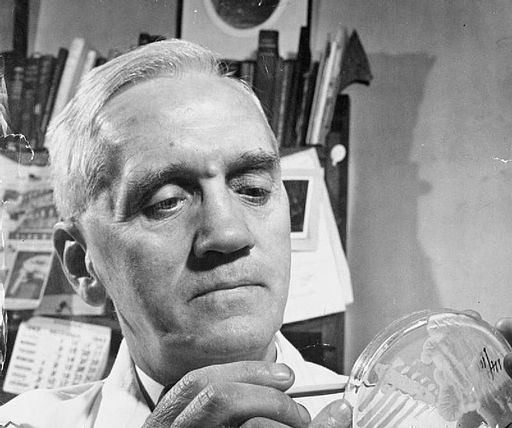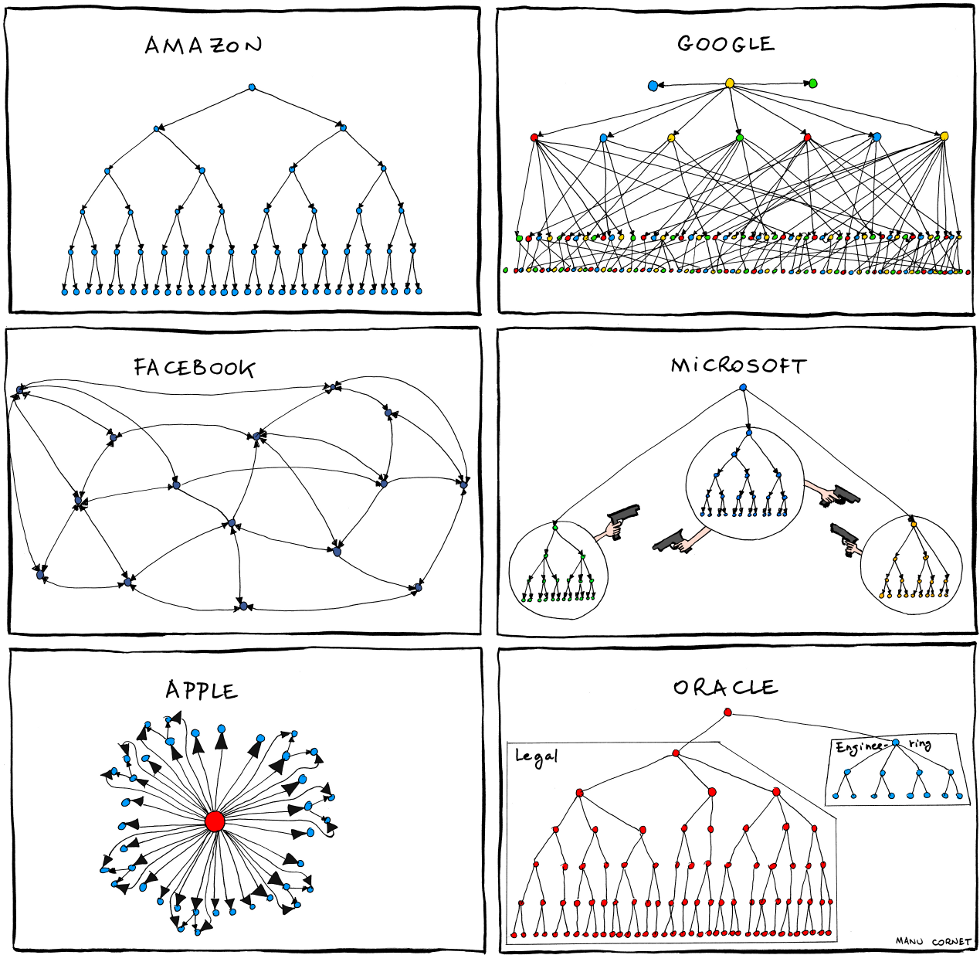
We grow up learning about great inventions and scientific discoveries in history. Chances are, it won’t take you more than a few seconds to name the discoverer of penicillin, the formulator of the theory of evolution by natural selection, or the inventor of the telephone. These “lone geniuses” changed history through their individual brilliance, creativity, and tenacity. Right?
Not exactly. For starters, as Muthukrishna and Henrich explain in Innovation in the Collective Brain, innovations are rarely (if ever) the product of a single individual. Fleming shared the Nobel Prize for the discovery of penicillin with Howard Florey and Ernst Boris Chain. Alfred Russel Wallace formulated the theory of evolution at the same time as Darwin. Elisha Gray even filed a patent for the telephone on the same day as Alexander Graham Bell (leading to a protracted Supreme Court battle between the two men).
The “lone genius” myth may lend itself to fact books and film scripts, but the frequent controversy over who came first betrays a deeper truth: innovations don’t depend on the identified innovator. Drawing on evolutionary theory and a wide array of evidence, Muthukrishna and Henrich argue that instead, innovations are a product of our collective brains — organisations and social networks made up of people sharing thoughts and learning from each other (as we’ve evolved to do). Ideas flow in these collective brains, much like neurons fire in our individual brains. We see multiple ‘inventors’ of the same idea, because if the historical, cultural and conceptual conditions exist in the collective brain for an invention to emerge, inevitably there will be multiple individuals at the nexus of these conditions. Or to put it another way: Innovations don’t rely on a particular innovator any more than your thoughts rely on a particular neuron.
So even if Alexander Graham Bell (or Elisha Gray) had never existed, we would still be telling our teenagers to put their phones away at the dinner table today.
Understanding these processes is crucial to success in today’s organisations, where an innovative edge offers a key competitive advantage in the global marketplace (just look at the history of Apple). A strategy for innovation that simply relies on finding and hiring geniuses is unlikely to work. What does work? The answer lies in three processes underlying the emergence of innovation.
First, and most commonly, innovations occur when we combine previously isolated ideas. Both Darwin and Wallace studied scientific papers on population size, learned about selective breeding techniques in farming, and travelled to islands where they observed variation in the native species. The theory of evolution by natural selection was the result of these combined insights.

Darwin: lone genius or a nexus of the 19th century English collective brain? (Image Credit: Herbert Rose Barraud (1845 – 1896) Wikimedia Commons, Public Domain)
Second, innovations often happen accidentally. Fleming ‘discovered’ penicillin when a window was left open during an experiment and the penicillium mould infected his samples, killing the bacteria. Crucially though, for an accident to become a discovery, we have to have the necessary experience to recognise it as serendipitous. In this example, Fleming’s scientific knowledge enabled him to recognise how valuable a bacteria-killing mould would be (although he wasn’t the only one). In other cases, simply being aware that a problem exists is sufficient to recognise a solution when it serendipitously emerges.

Alexander Fleming and his serendipitous bacteria-killing mould (Image credit: Wikimedia Commons, Public Domain)
Finally, we can innovate by making incremental improvements, such as Alexander Graham Bell and Elisha Gray, who both built on and recombined multiple scientific advances to invent the first recognisable telephone. As Newton famously declared, “If I have seen further, it is by standing on the shoulders of giants”. (Consistent with Muthukrishna and Henrich’s argument, Newton’s declaration was itself built on earlier versions of the phrase, which had been around for at least 5 centuries). How does this translate to organisations? The paper suggests key ways that organisations can increase rates of innovation.
1. Increase interconnectivity
To be able to combine previously unconnected ideas (like Darwin and Wallace did), we need to have exposure to those ideas. Some people do this naturally, cultivating a wide network and showing broad curiosity about the organisation beyond what would help them in their ‘day job’. But organisations can foster it too.
In addition to well-known methods such as cross-departmental taskforces or mobility programmes, the most innovative companies today use “hackathon” days or in-house social media such as twitter-style platforms, messaging apps and team chatrooms to enhance interconnectivity—and therefore the chances of idea combination (Symphony or Slack are good examples).
We already know this works at a societal level. Increases in interconnectivity thanks to literacy, radio, television and most recently, the Internet, have led to an unprecedented rate of innovation, with an exponential increase in patents and publications in many fields. There is good reason to think the same processes would operate within an organisation: just look at Google—their third pillar of innovation is “share everything”.

A highly accurate and scientific representation of various technology company’s organisational structure. (Image credit: Manu Cornet (http://www.bonkersworld.net/), under a Creative Commons licence)
2. Leverage diversity
Individuals with diverse cultural experiences have a wider range of ideas to draw on. Research suggests that they’re also better able to overcome ‘functional fixedness’, seeing objects for more than their intended use. Where a monocultural person might see a plastic Ziploc bag for storage, a multicultural person might see a way to knead dough without the mess, pipe frosting without specialist tools, or create a cold compress in a pinch.
Having diversity of thought within a work team—whether from diverse cultural or educational backgrounds—provides the overall team with access to more ideas, which when combined in new ways, lead to better outcomes than teams that don’t have the same level of diversity. Of course, diversity also has the potential to create communication challenges, reducing interconnectivity.
So how do we reap the benefits while minimising the downsides? That’s a question Google spent years researching. Their conclusion was that creating a team climate of trust and respect in which people are comfortable being themselves (“psychological safety”), is key to leveraging diversity effectively. Organisations would do well to cultivate diversity in thought, but commonality in language, goals, and core values.
3. Make it ‘safer to fail’
The paper argues that societies benefit from making it safer for entrepreneurs to fail (for example, via bankruptcy laws and social safety nets), as long as the benefits of success are shared by all. That is, while most entrepreneurs will fail, those that succeed—the Facebooks, Ubers, and Airbnbs—create advantages for society that outweigh the costs of the failures. Similarly, organizational cultures that reward calculated risk-taking, with a small cost to the individual, but large benefits shared by everyone in the organization, will undoubtedly see more failures than successes; however, with a large enough market, the few successes can pay for the many failures.
Is your innovation strategy still reliant on the elusive “lone genius”? Try picking your collective brain.
♣♣♣
Notes:
- This post is based on Innovation in the collective brain, by in Philosophical Transactions of the Royal Society B, February 2016.
- The post gives the views of its authors, not the position of LSE Business Review or the London School of Economics.
- Featured image credit: Steve Jobs, Adobe Lightroom 4, by Marthinshl, CC-BY-2.0
- Before commenting, please read our Comment Policy
 Katie Dowbiggin is a Vice President at Pine Street, Goldman Sachs’ leadership development organisation for partners and select managing directors. She completed her MA at the University of Cambridge and is a MSc Organisational and Social Psychology student at the LSE.
Katie Dowbiggin is a Vice President at Pine Street, Goldman Sachs’ leadership development organisation for partners and select managing directors. She completed her MA at the University of Cambridge and is a MSc Organisational and Social Psychology student at the LSE.
 Michael Muthukrishna is an Assistant Professor of Economic Psychology at the LSE, Research Associate of the Department of Human Evolutionary Biology at Harvard University, and Technical Director of The Database of Religious History. His research focuses on the evolution of humans and human culture and how this understanding can help us reduce corruption, strengthen democracy, and increase innovation.
Michael Muthukrishna is an Assistant Professor of Economic Psychology at the LSE, Research Associate of the Department of Human Evolutionary Biology at Harvard University, and Technical Director of The Database of Religious History. His research focuses on the evolution of humans and human culture and how this understanding can help us reduce corruption, strengthen democracy, and increase innovation.






Peple like Alexander von Humboldt v. rare
http://www.nybooks.com/articles/2015/10/22/very-great-alexander-von-humboldt/
The Very Great Alexander von Humboldt
However do note, Einstein from University his brother established:
http://www.jhuapl.edu/techdigest/views/pdfs/V06_N3_1985/V6_N3_1985_Muller.pdf
WILHELM VON HUMBOLDT AND THE UNIVERSITY IN THE UNITED STATES
https://www.hu-berlin.de/en/about/history/standardseite
The modern classic of the reform university
Current efficiency culture is actually harming potential for innovations:
https://hbr.org/2016/03/our-economy-is-obsessed-with-efficiency-and-terrible-at-everything-else
Our Economy Is Obsessed with Efficiency and Terrible at Everything Else
https://umairhaque.com/the-creativity-crisis-eff6a67853de#.s2hgazuak
The Creativity Crisis
How Extreme Capitalism Ate Creativity, and What to Do About It
https://umairhaque.com/why-wealth-inequality-matters-3d1755419bd2#.73rrjan90
Why Wealth Inequality Matters
How To Fix a Broken World